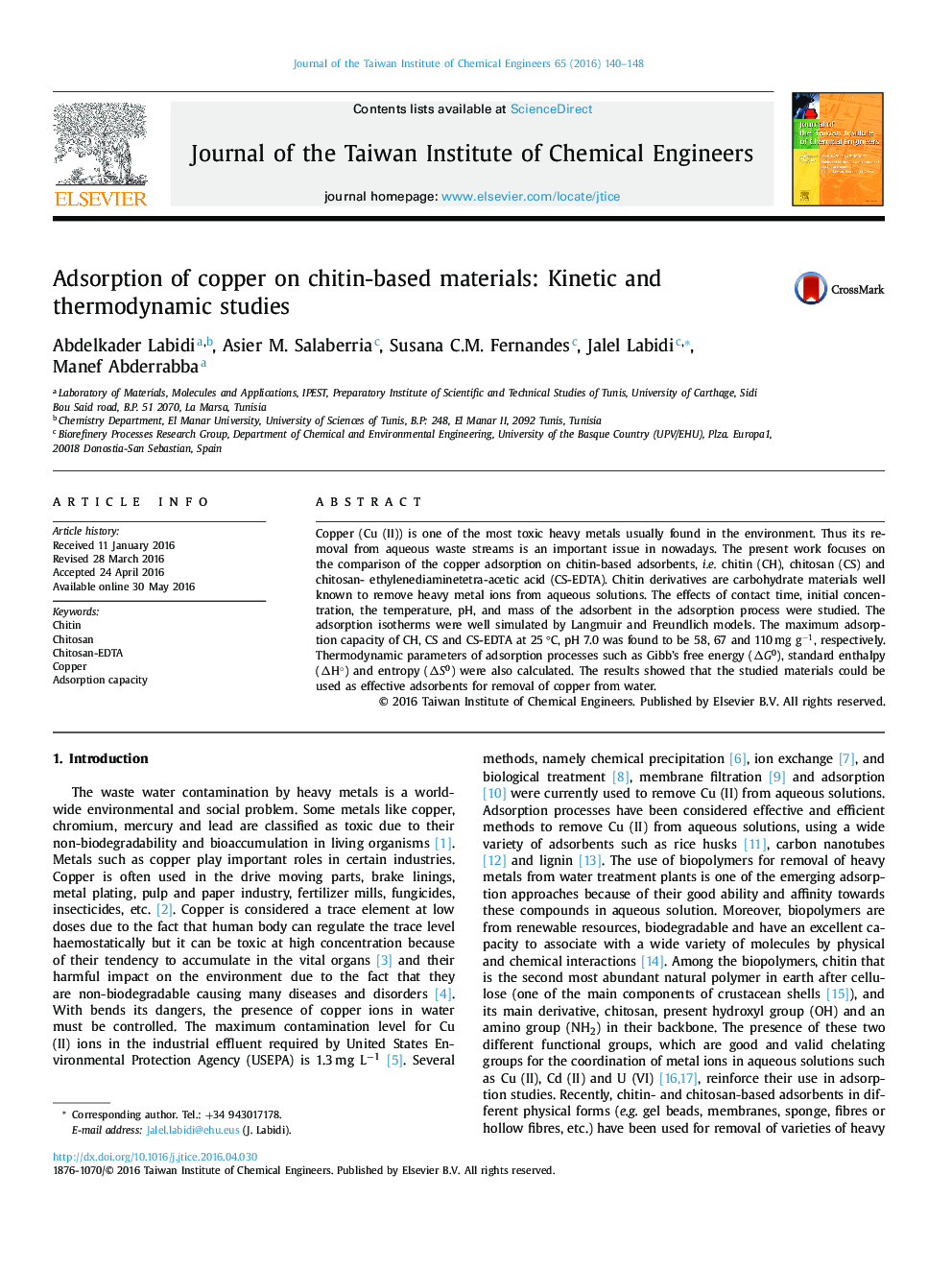| Article ID | Journal | Published Year | Pages | File Type |
|---|---|---|---|---|
| 690209 | Journal of the Taiwan Institute of Chemical Engineers | 2016 | 9 Pages |
•Modification of chitosan with ethylenediaminetetra-acetic acid (CS-EDTA) was done.•Adsorption capacities of CS-EDTA, chitin and chitosan were determined.•Adsorption capacity of Cu (II) on CS-EDTA is higher than on Chitosan and Chitin.•Adsorption kinetics follows a pseudo-second-order model.•Negative values of(ΔG0) indicated spontaneous nature of the Cu (II) adsorption process.
Copper (Cu (II)) is one of the most toxic heavy metals usually found in the environment. Thus its removal from aqueous waste streams is an important issue in nowadays. The present work focuses on the comparison of the copper adsorption on chitin-based adsorbents, i.e. chitin (CH), chitosan (CS) and chitosan- ethylenediaminetetra-acetic acid (CS-EDTA). Chitin derivatives are carbohydrate materials well known to remove heavy metal ions from aqueous solutions. The effects of contact time, initial concentration, the temperature, pH, and mass of the adsorbent in the adsorption process were studied. The adsorption isotherms were well simulated by Langmuir and Freundlich models. The maximum adsorption capacity of CH, CS and CS-EDTA at 25 °C, pH 7.0 was found to be 58, 67 and 110 mg g−1, respectively. Thermodynamic parameters of adsorption processes such as Gibb's free energy (ΔG0), standard enthalpy (ΔH°) and entropy (ΔS0) were also calculated. The results showed that the studied materials could be used as effective adsorbents for removal of copper from water.
Graphical abstractFigure optionsDownload full-size imageDownload as PowerPoint slide
